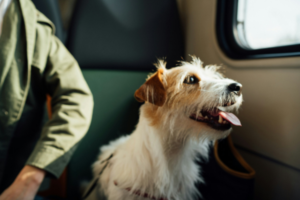Dog Safety Tips

Not all dog dangers are obvious. October is National Animal Safety and Protection Month, the perfect time to review the necessary safety measures to ensure your dog is happy and healthy. Since your pup can’t tell you exactly what’s wrong, it’s important to protect them from potential hazards.
Microchips & ID tags
One of the most effective ways to protect your pup from being lost or stolen is by properly equipping them with a microchip and ID tags. Microchips are super small computer chips that are planted under your dog’s skin with a needle. Each chip has a special registration number with the pet parent’s name and contact information. Most shelters and vets have readers that display the information so the pup can be returned safely to their respectful owners.
Pet-proof your home
Pups can be very curious creatures. Keep your furry friend out of trouble in your home with these tips:
- Keep all medications, cleaners, chemicals, and laundry supplies on high shelves where your pup can’t get into them
- Keep all wires out of reach or covered so dogs can’t chew them
- Keep trash cans covered or inside a latched cupboard
- Use childproof latches to keep little paws from opening kitchen and bathroom cabinets
- Make sure all heating/air vents have covers
- Some common house plants can be poisonous to pets. Keep all plants out of reach
Pup Safety in Emergencies
Emergencies can come in all different forms: fires, tornadoes, earthquakes, hurricanes, etc. In the event of an emergency, it’s important you’re prepared to keep both you and your pup safe. Here are some steps to make sure your furry friend is included in your emergency planning:
- Make sure your pet’s ID tags and microchips are up to date with your current contact information
- Keep a leash/carrier near an exit
- Keep your veterinary records in your disaster planning kit
- Have a plan of where your pet will stay in case you need to evacuate your home. Sometimes pets aren’t allowed in shelters so keep that in mind
- Create a plan in case you’re not home during an emergency. Ask a trusted neighbor to help you evacuate your pup if necessary
- Create an animal emergency kit. Have enough food and water for at least 2 weeks per pet. Make sure you have plastic bags, leashes, and their medical records
In all, it’s important that we’re always taking matters to prevent, spot, and handle any potential trouble or dangers for our beloved furry friends. If you’re looking for a safe, hazard-free place to leave your pups during the day, learn about our doggie daycare here: https://www.dogtopia.com/dog-daycare/











